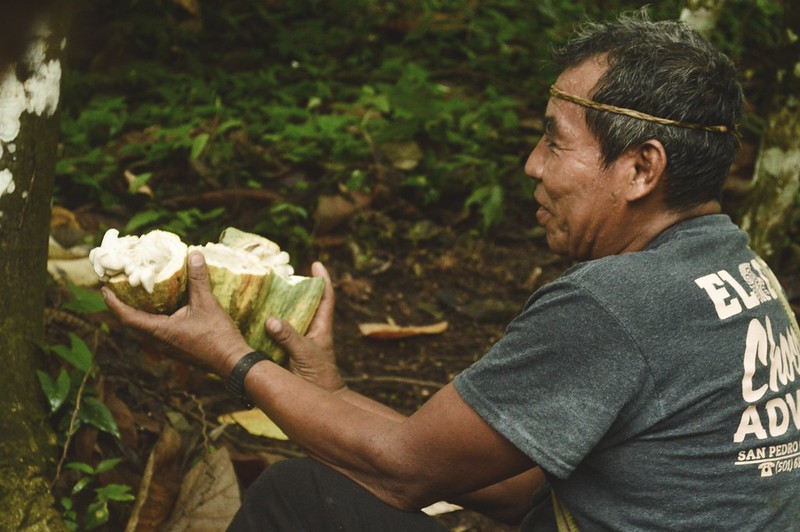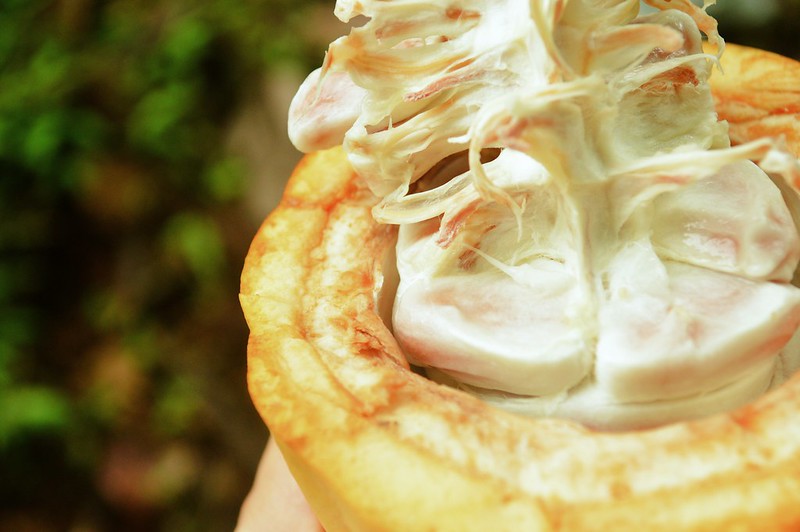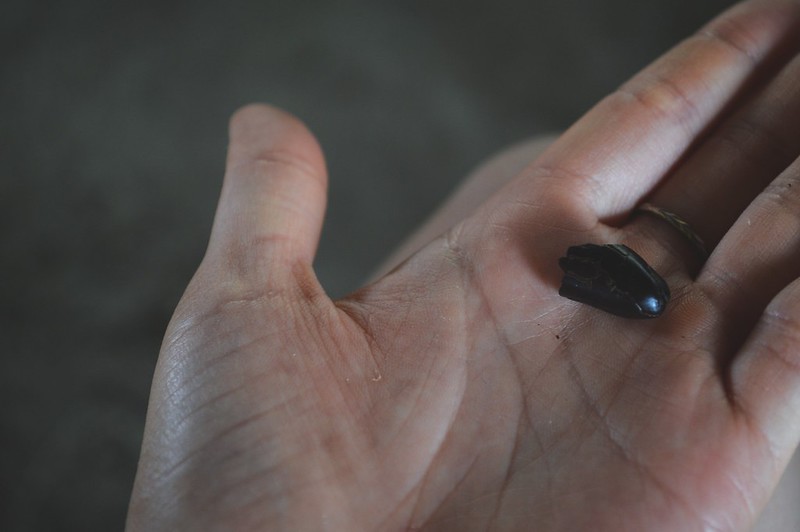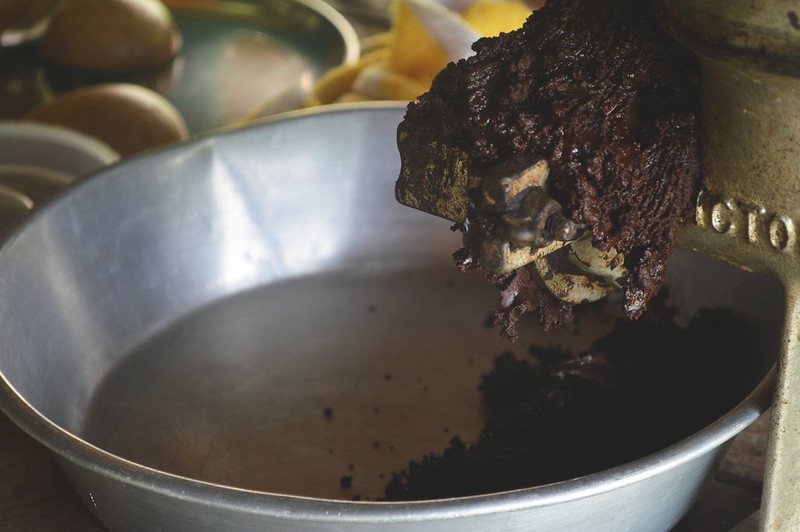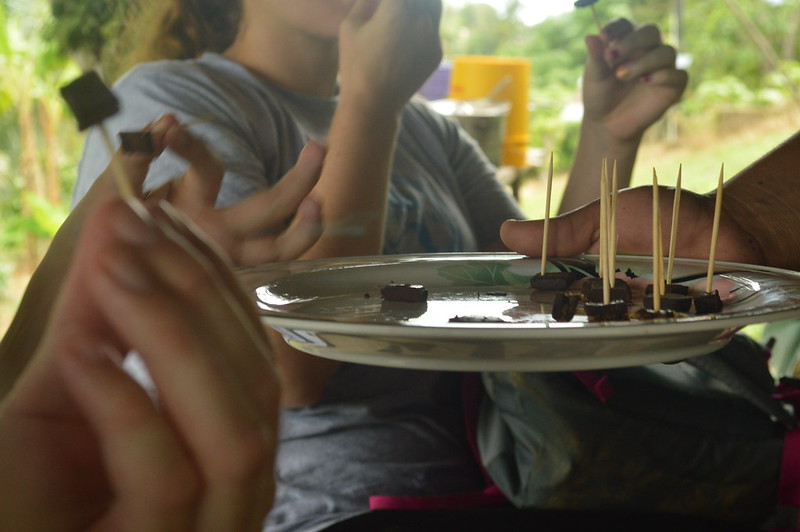Cacao nibs, cacao beans, chocolate – with this sort of terminology, an accurate image of the source of one of America’s favorite confections might evade you. These humble nibs and beans, as we call them, are the crude material for the melty, sweet, and endorphin stimulating treat many people love.
Despite the indulgent nature of the chocolate we have come to know, it’s perfectly rational for the term ‘cacao beans’ to lead you to wonder whether or not chocolate is harvested from slim plants that produce elongated pods with crisp outer shells, like those attributed to some types of legumes. After all, we’re thousands of miles away from where the very essence of chocolate thrives. For example, Mesoamerica. Belize to be exact.
At Eladio Pop’s cacao farm in San Pedro, Belize, I learned that cacao pods come in a variety of colors and with exteriors of thick, lumpy, squash-like husks. In the midst of what any newcomer would guess to merely be another natural forested area, Eladio will lead you to various clusters of cacao trees scattered throughout. But he doesn’t stop there. During my tour of his farm, he plucked several ripe pods from his trees, firmly knocked the pods against a solid surface, such as a rock, to split them open and reveal a mass of seeds surrounded by creamy white pulp.
Cacao is a fruit. It’s slimy. It’s sweet. And you can eat it. In fact, Eladio, charming and upbeat, will encourage visitors to do so as he leads them through the hilly jungle of his farm.
The cacao pod is analogous to a pomegranate – you open the husk to eat the flesh on the seeds inside. It tastes like a tropical mixture of peaches and mangoes, and the flavor made me question if I had just discovered what the ambrosia of Greek mythology is made of. Eladio also happens to put it to good use by making a sweet, cacao wine. When tasting cacao flesh, just make sure to spit out the seed at the end, unless you intend to follow up with a caustically bitter and fibrous mouthful. Though repellent with their bitter taste when raw, the seeds of the cacao pods are the critical element of the chocolate making process.
Following the tour of his farm, Eladio invited us back to his home, where his wife and children gave us a demonstration of how they process the cacao for further use.
At home, cacao seeds from harvested pods go through a fermentation period for a few days in order to separate the seeds from the pulp surrounding them. The seeds (beans) are then transformed into shiny gems – what we know as cacao nibs – after being roasted on a small metal cooking surface.
Roasted cacao beans are then winnowed to separate them from their skins and then ground into paste either by mechanical grinder or by hand.
From there, the cacao paste is mixed into water to create a traditional Mayan cacao drink or with other ingredients to form homemade bars of chocolate.
This is the bare bones of processing cacao – the chocolate that reaches American tastebuds goes through more extensive refining processes. They might take some getting used-to and not have the same melt-in-your-mouth quality of the chocolate bars in the US, but Eladio’s homemade chocolate bars are earthy, hearty, and beat anything mass produced by Hershey’s.
Given the opportunity to buy bars of chocolate hand-crafted by Eladio and his family, I readily indulged. But despite a day filled with chocolate feasting by both my eyes and tastebuds, the highlight of Eladio’s hospitality was not so much what I got to taste, as it was the anecdotal philosophy Eladio imparted with us as he led us through his farm. Simple and genuine, Eladio shared how he takes a harmonious approach with his farming and his appreciation and reverence for the complexity inherent in the jungle ecosystem housing his source of livelihood. With an outlook on life and his work so captivating, it’s no surprise that the products of his labors are equally as sweet.
For more information chocolate’s role in southern Belize, click here.



